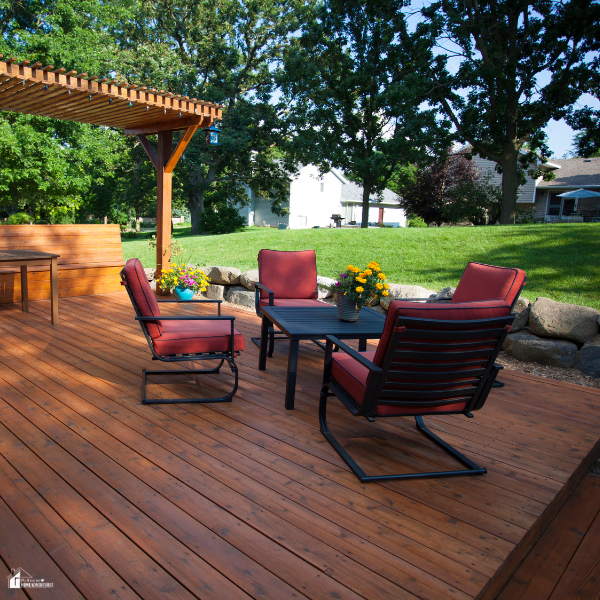DIY or Hire a Pro? How to Decide for Your Composite Decking Project
This post may contain affiliate links which might earn us money. Please read my Disclosure and Privacy policies hereComposite decking is a brilliant choice for anyone wanting a low-maintenance, long-lasting outdoor space. It’s sleek, weather-resistant, and comes in a variety of colours and finishes to suit any garden.
But before you order those boards, there’s one big decision to make: should you roll up your sleeves and build it yourself, or call in the pros?
The answer depends on a few key factors—your experience, budget, available time, and the complexity of your project. Let’s break down exactly what’s involved and help you figure out which route is best for your decking dreams.

What’s Involved in Building a Composite Deck
Building a deck isn’t just about screwing boards into place. There’s a fair bit of prep work that goes into getting it right.
First, you’ll need to design your layout and measure up. Then it’s time to prepare the ground, which may include clearing the area, levelling it, or even adding a weed barrier or gravel for drainage.
Next comes the subframe—typically made from treated timber or composite joists—followed by proper spacing and installation of the decking boards themselves. Finishing touches like fascia boards, steps, balustrades, or railings also need to be factored in.
You’ll need a good set of tools: drills, saws, levels, tape measures, and possibly a mitre saw if your design has angled edges. It’s not rocket science, but it does require a fair bit of know-how, especially if you want it done right.
Don’t forget to find your composite decking in advance. For the best decking supplier in the UK, check out the link.
When DIY Makes Sense
Tackling your decking project yourself can be incredibly rewarding—if you’ve got the right skill set. If you’ve done basic carpentry or home improvement jobs before, you may already have the confidence (and tools) to take it on.
Simple, small, or ground-level decks are perfect for DIY, especially if they don’t involve major landscaping or structural work.
DIY is also ideal if you’ve got the time to dedicate to the project. You can work at your own pace and tweak the design as you go, without worrying about a contractor’s schedule. And if you enjoy learning something new, it’s a great opportunity to add another skill to your toolbox.
Pros of DIY Composite Decking
The biggest draw of DIY is cost saving. By cutting out labour costs, you can stretch your budget further—perhaps even afford higher-end decking boards. You also get complete creative control, which is great if you want something personalised to your space.
There’s also a certain pride that comes from building something with your own two hands. Watching your family enjoy a deck you built yourself? That’s hard to beat.
When Hiring a Pro Is the Better Option
There’s no shame in leaving it to the experts—especially if your decking plans are more complex. If you’re looking at a raised deck, multi-level design, or need to incorporate lighting, fencing, or custom features, a professional installer will likely get a better (and safer) result.
It’s also worth hiring a pro if your garden has uneven ground or drainage issues that need sorting before work begins. A seasoned contractor will know how to handle these challenges efficiently, without cutting corners or risking long-term damage.
And let’s not forget: time is money. If you don’t have the bandwidth for a full-blown DIY project, hiring someone to handle it from start to finish can be a huge relief.

Pros of Hiring a Professional
Professionals bring experience and peace of mind. They’ll often spot issues you might overlook—like necessary planning permissions or structural concerns—and make sure everything’s done to a high standard. Most also offer a workmanship guarantee, which means you’re covered if anything goes wrong.
The result? A polished, professional finish that’s likely to last longer and look better. Plus, you’ll have more time to enjoy the deck instead of building it.
Elements to Focus on with Decking Samples
Are you ordering decking samples? This can be a good way to examine composite and make sure you’re purchasing from the right brand. After all, this is going to be a big investment, particularly if you’re renovating a large garden.
Therefore, you want to ensure you’re making the right decision from the beginning. Here are some elements you want to examine when your samples arrive.
Overall Quality
First, you need to make sure you’re purchasing quality composite. Brands can vary greatly in how much they invest in their products. Often, flimsy and cheap materials won’t last for many years, which can feel like you’re wasting your money.
However, there are brands out there that make sure their composite decking is high-quality, and this is going to be obvious with the samples. It will feel sturdier and thicker, which allows you to feel confident with your purchase — especially when choosing trusted options like WoodEvo composite decking.
The Colour
Are you unsure of the colour of composite decking you want? Well, this is the great thing about ordering samples. You get to see different shades in person and see what they’ll match in your garden.
You can experiment with the colours you order and really explore your options. Often, colours can look different in person than they do on the internet.
The Cost
Note that not all decking will cost the same. There are some affordable composite brands and others that are very expensive.
Some companies will also have various collections, with some being premium and having a higher cost. Samples allow you to evaluate your options and see what’s going to work for your budget.
Conclusion
Whether you go full DIY, hire a seasoned pro, or find something in between, the most important thing is making a choice that suits your time, skills, and budget. Composite decking is a long-term investment, and doing it right from the start will save you plenty of headaches down the road.
Take your time, weigh the pros and cons, and don’t be afraid to ask questions—whether you’re talking to a supplier or a local installer. The right choice isn’t about what everyone else is doing—it’s about what’s right for you and your outdoor space.








